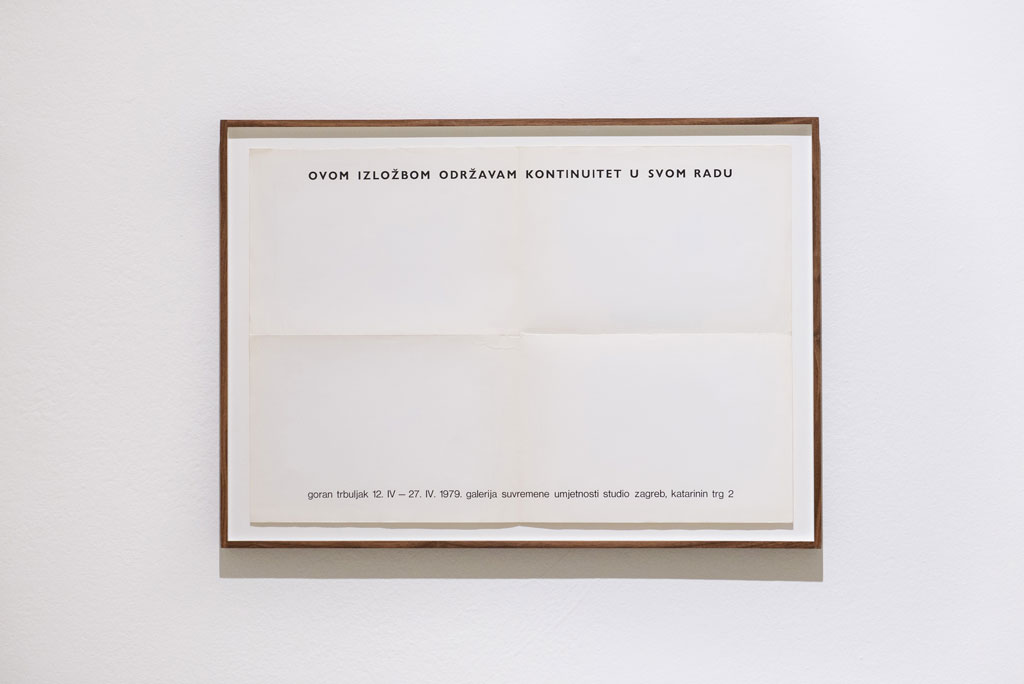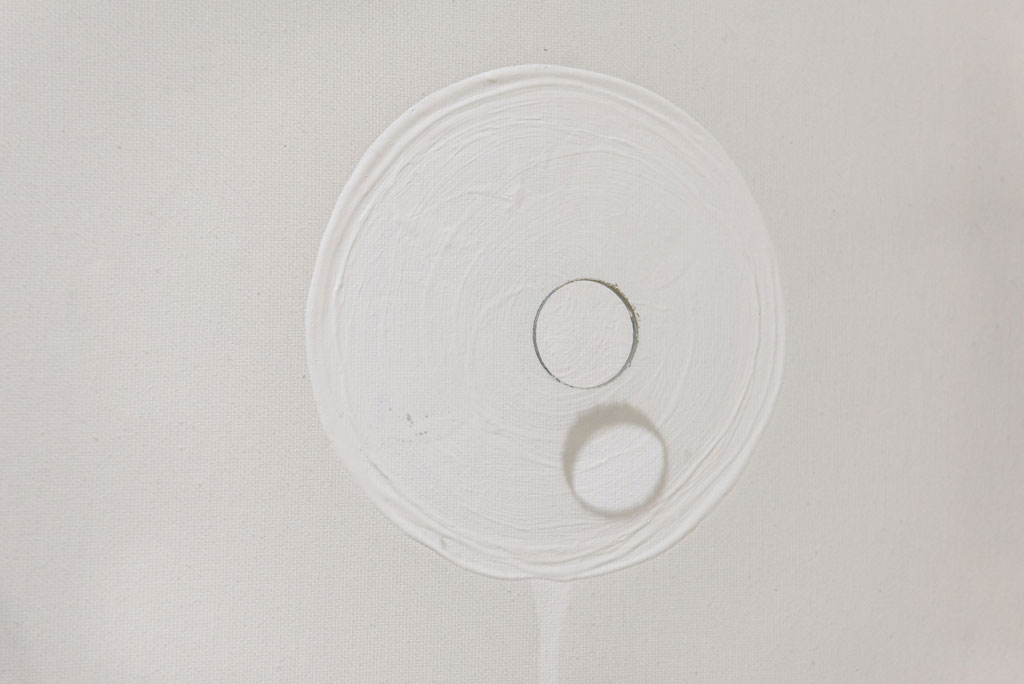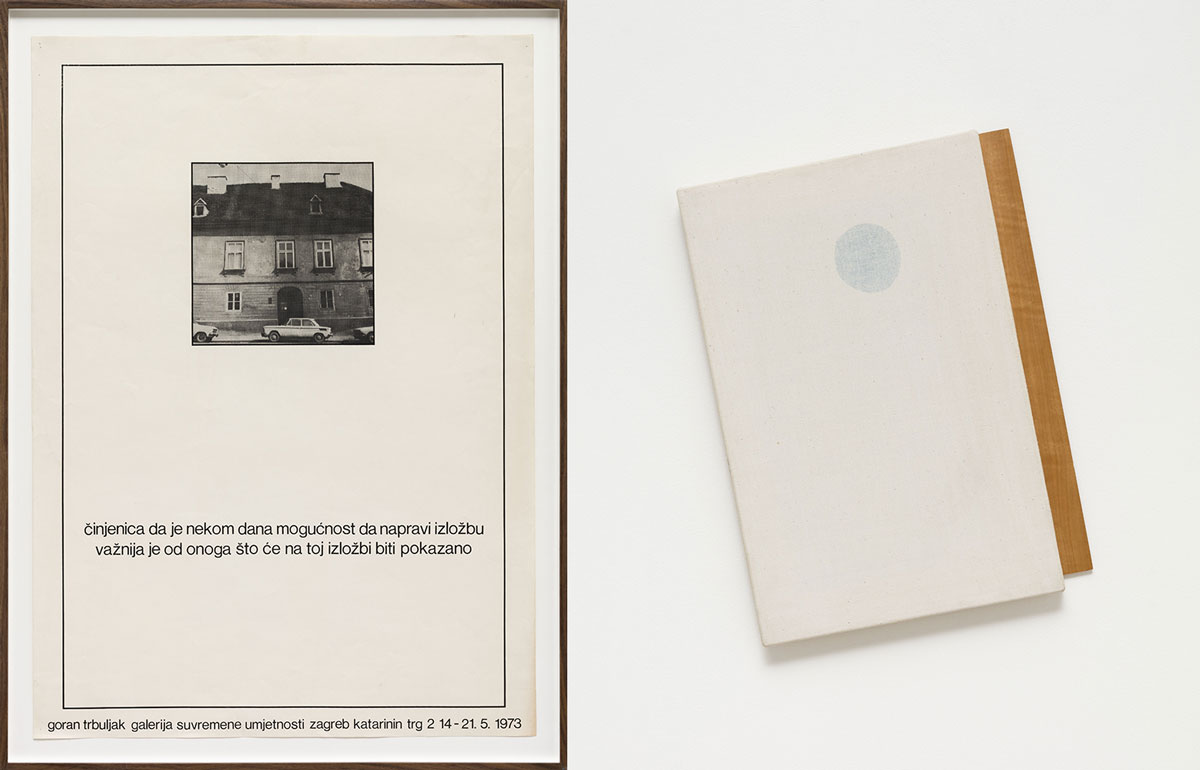ART CITIES:Bologna-Goran Trbuljak,Part II
 Goran Trbuljak can be inserted among the generation of artists who were shaped in the historical and geopolitical setting of the Socialist Federal Republic of Yugoslavia. In his work, he seeks to go beyond the artistic tradition in a “socialist modernism” mould that became established after 1950. Compared to artists actively engaged in the Conceptual Landscape and Avant-Garde Movement of the New Practice Art*, with its focus on recognising artist authorship and the aura of a piece of art, Trbuljak is known for enacting a strategy that, by radically questioning these two modernist principles, define him as a precursor of postmodern sensitivity (Part I).
Goran Trbuljak can be inserted among the generation of artists who were shaped in the historical and geopolitical setting of the Socialist Federal Republic of Yugoslavia. In his work, he seeks to go beyond the artistic tradition in a “socialist modernism” mould that became established after 1950. Compared to artists actively engaged in the Conceptual Landscape and Avant-Garde Movement of the New Practice Art*, with its focus on recognising artist authorship and the aura of a piece of art, Trbuljak is known for enacting a strategy that, by radically questioning these two modernist principles, define him as a precursor of postmodern sensitivity (Part I).
By Efi Michalarou
Photo: Istituzione Bologna Musei Archive
Goran Trbuljak’s solo exhibition “Before and After Retrospective” features a wide selection of works, from Tribuljak’s early art of the late 1960s to his more recent production, and taking in the full range of his expressive vocabulary, encompassing paintings, frottages, monochromes and monograms, photographs, films, books and documentations of his street actions. Trbuljak’s aesthetic search probes the boundaries between the foundations of art and anti-art, artist and non-artist seeking for alternative means of production and representation. In his continuous drive to redefine the environment, his musings analyse and decompose the rules that underpin the museum and art gallery system, and also the mechanisms in place to accept something as art. On the basis of this approach, even the simplest of gestures can act as a tool to criticise the wider artistic and social order. Concealed movements – like pushing a finger through a hole in the door of Zagreb’s Modern Gallery in “Hole in the door” (1969) or fleeting actions performed anonymously in public areas – such as placing photocopies of several photos of holes in the tarmac on the ground next to the same holes in “Anonymous street actions” (1970), underline his reflections on the place of artwork with regards to institutions and his position as a young and still unknown artist. In 1971, with an invitation to show his work at the Student Cultural Centre of Zagreb, Trbuljak found himself engaging directly with institutional spaces. This was the start of a display method known as “exhibition work”, which he returned to until the 1980s. His contribution: a single poster with the statement “I do not want to show anything new and original” followed by his signature g. trbuljak, is the radical expression of his refusal to be considered an artist in the conventional sense. The artist subsequently exhibited two artworks produced according to the same visual concept at the Museum of Contemporary Art of Zagreb: “The fact that somebody is given the opportunity to make an exhibition is more important than what is shown at the exhibition” (1973) shines the spotlight on the institutional conceding of “opportunity” as the primary condition of artistic production, while “With this exhibition I maintain continuity in my work” (1979) deconstructs and, at the same time, perpetuates one of the premises for achieving success: continuity, that is creating and retaining a recognisable artistic style. The solo exhibition at the Galleria del Cavallino of Venice organised in 1977, further explores the relationship between artist and art gallery in the context of international art, in this case, Italy. Playing on an invitation he received from a highly regarded art gallery, Trbuljak presented a series a photographic prints and posters entitled “Exhibition views at Galleria del Cavallino, Venice” that reproduced the enlarged covers of several catalogues of well-known artists published by the gallery. The disorder he introduced within the established order of art production and to the role of this famous gallery – altering its name, publishing its history in the catalogue instead of presenting his own little known career and printing its name on the cover in larger letters than his own – make the suggestion that this institution is not merely an impartial exhibition space, but also has the power to promote art and change the status of the artist exhibiting. The desecration of the role of authorship, in a spirit similar to the protests of the 1970s, in his subsequent works, he evolved towards the expression of an interior crisis caused by the conflicts within the art world and the implications deriving from his decision to label himself as an “artist”. Referendum can be seen as the apex of the humor and self-irony of his language, which threads through all his work. In this street action of 1972, Trbuljak asks unwary passers-by to decide whether he is an artist of not. As his name and art were virtually unknown at that time, the referendum concluded with 259 votes in favor and 204 against, and was therefore totally irrelevant, showing how little it matters whether the person about which we make a judgement is truly engaged in a creative activity, or even if such creative activity exists at all. The exhibition path at Villa delle Rose documents how in Trbuljak’s search for creativity, his works on paper (vitrines) executed from the 1980s onwards in the form of notebooks and monographies must be considered as critically important, all sharing a common idea that “An artist does an exercise as he waits for the time when he will be ready for the work he will make in future”. Production of this kind, allowed him to set a clear distinction between his “official” activity and his more intimate work, carried out in his home and not intended for display, but which, however, allows him to fill a “creative space” through manual exercises that have nothing to do with conceptual research. While basing his thoughts on the processes of appropriation and deconstruction of institutional and curatorial methods, Trbuljak did not avoid the question of his own position and complicity with the world of art. Despite being well-aware of the contradictions engulfing him, he never stopped exploring the possibilities of art, placing his own work between the passionate defence of artistic work and its rigorous criticism.
* The New Art Practice members in the 1970s were mostly going on outside exhibition spaces, in galleries that were part of the student cultural centers, but occasionally also in certain state galleries which presented in their programs the local and international avant-garde scene,
Info: Curators: Lorenzo Balbi and Andrea Bellini, Istituzione Bologna Musei, Villa delle Rose, via Saragozza 228-230, Bologna, Duration: 26/1-24/3/19, Days & Hours: Fri-Sun 14:00-18:00, www.mambo-bologna.org









